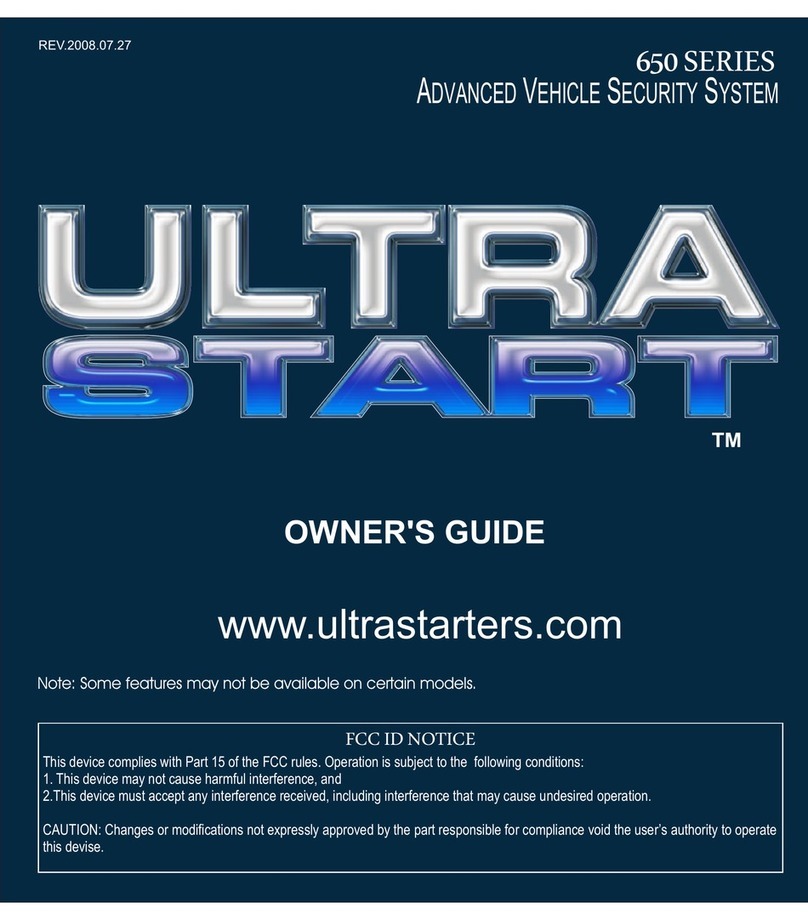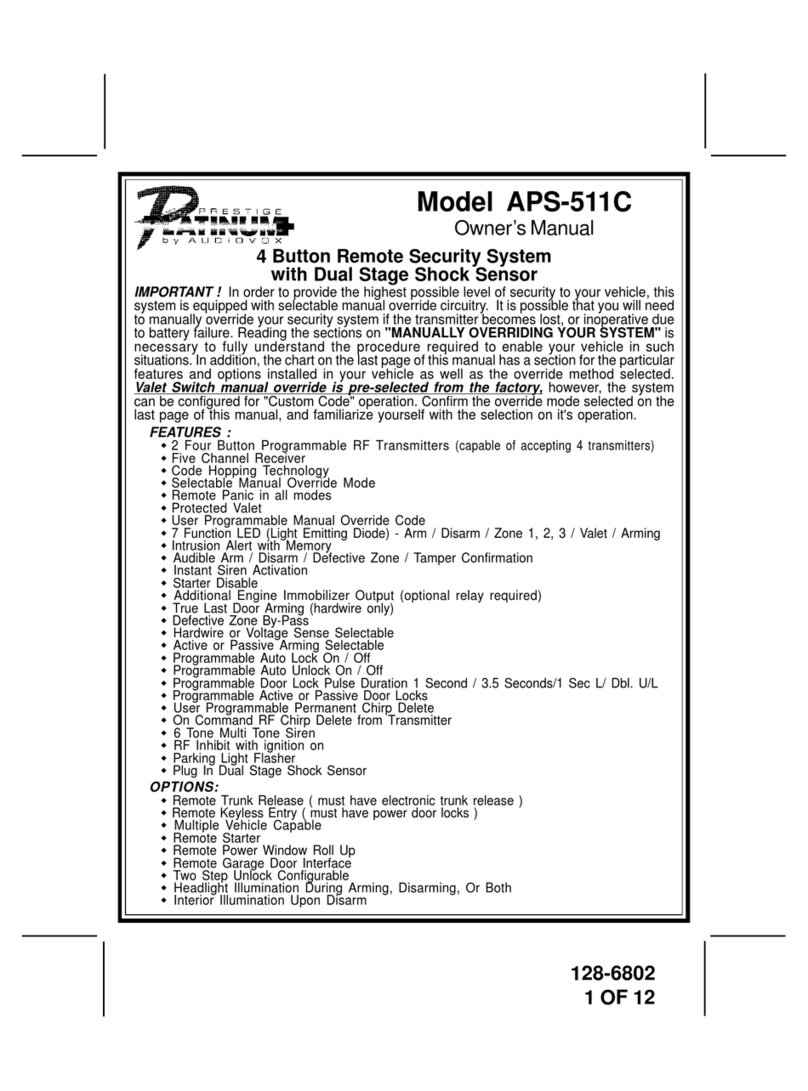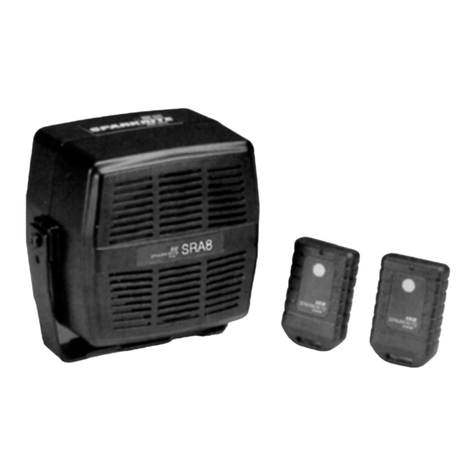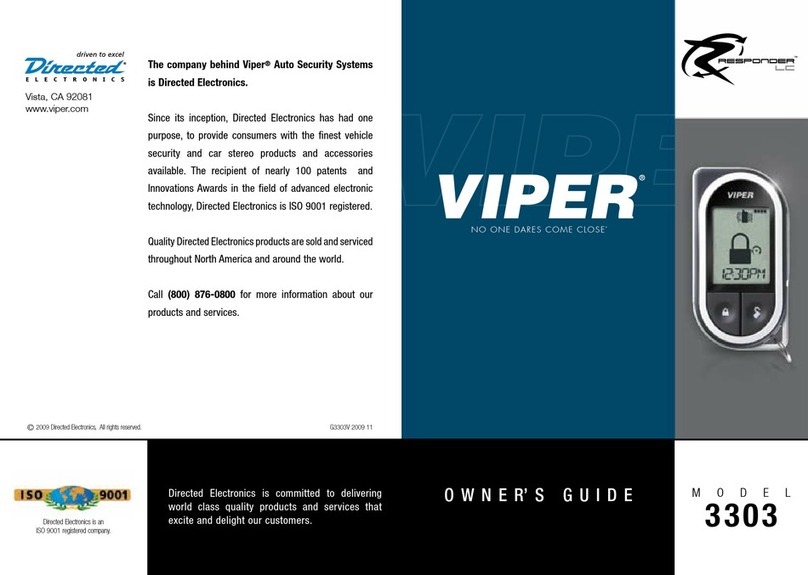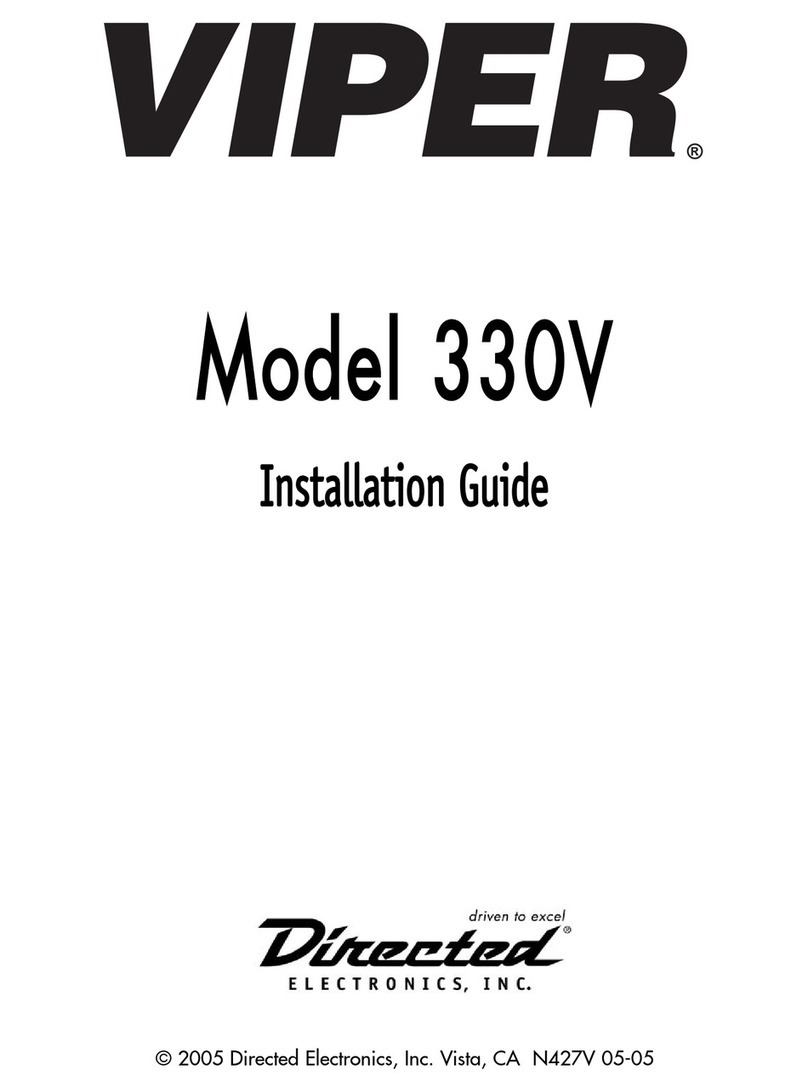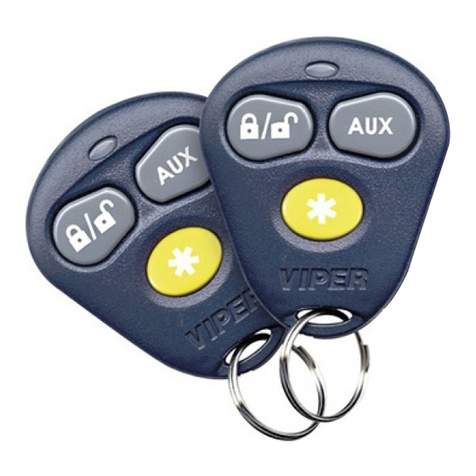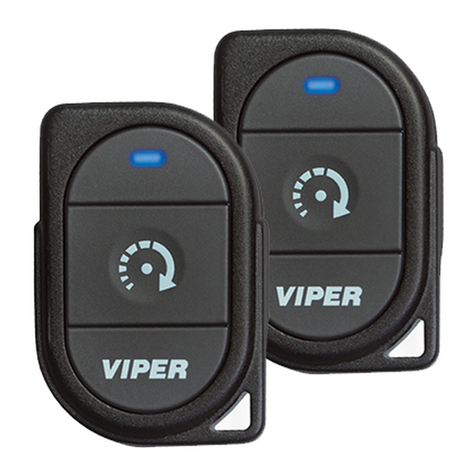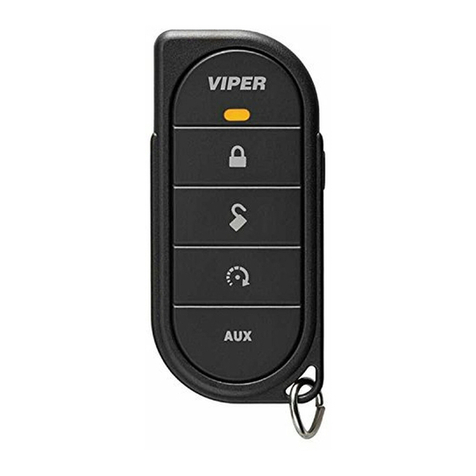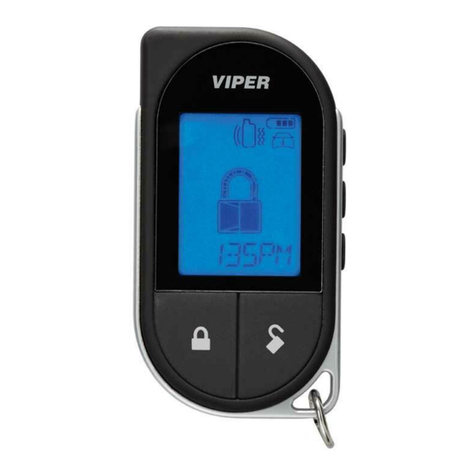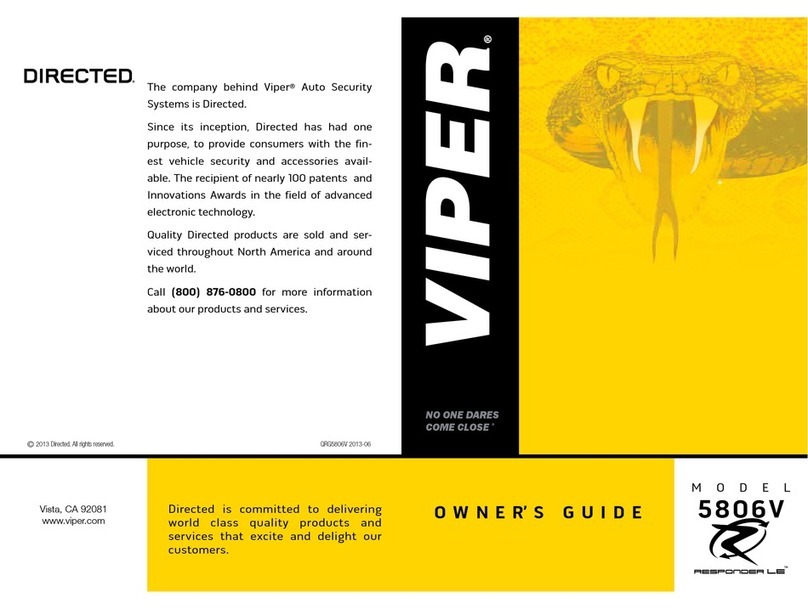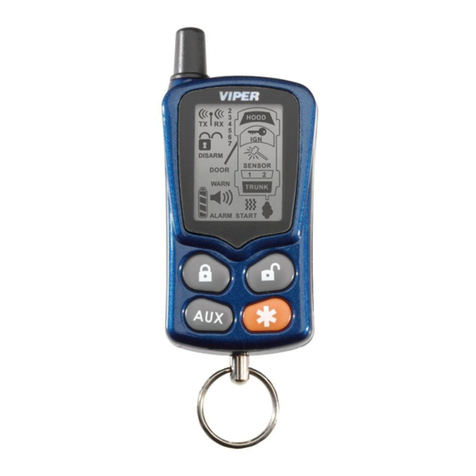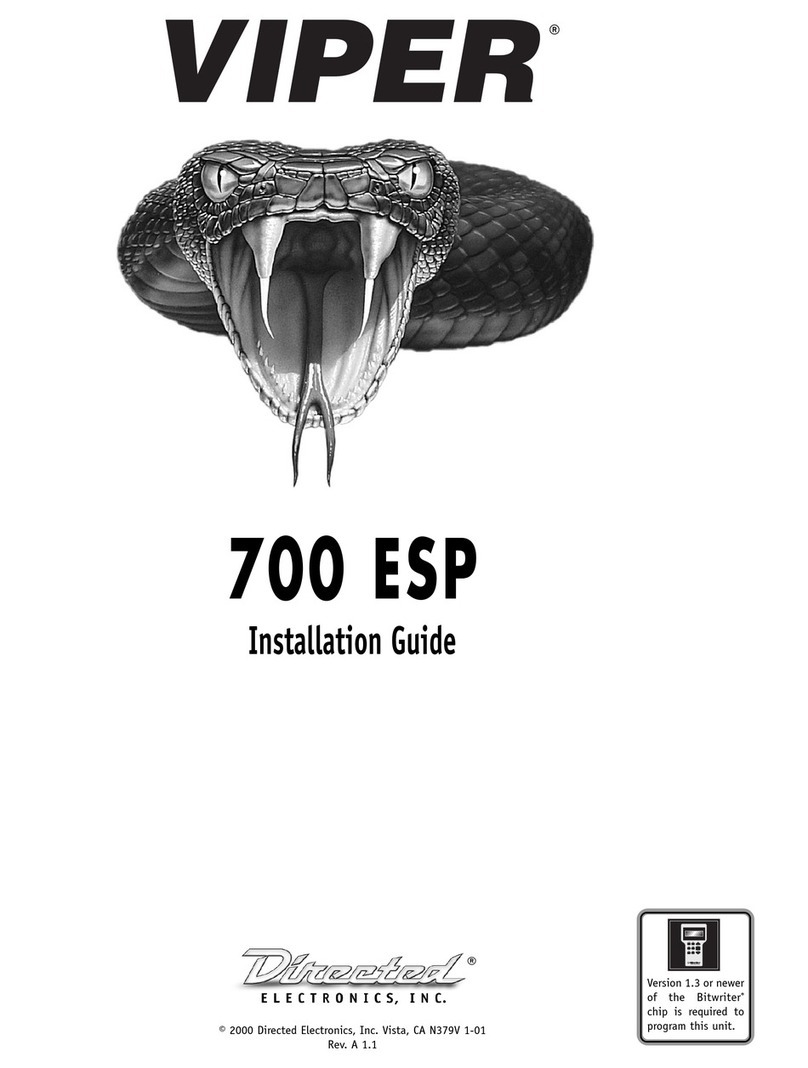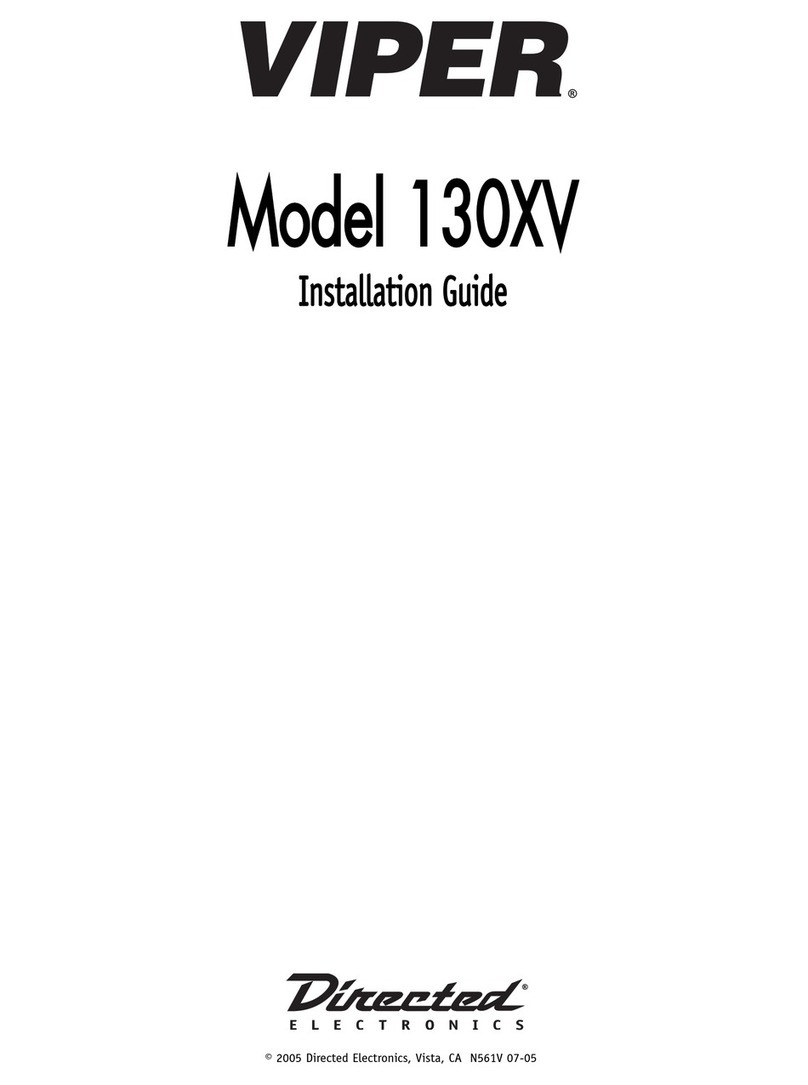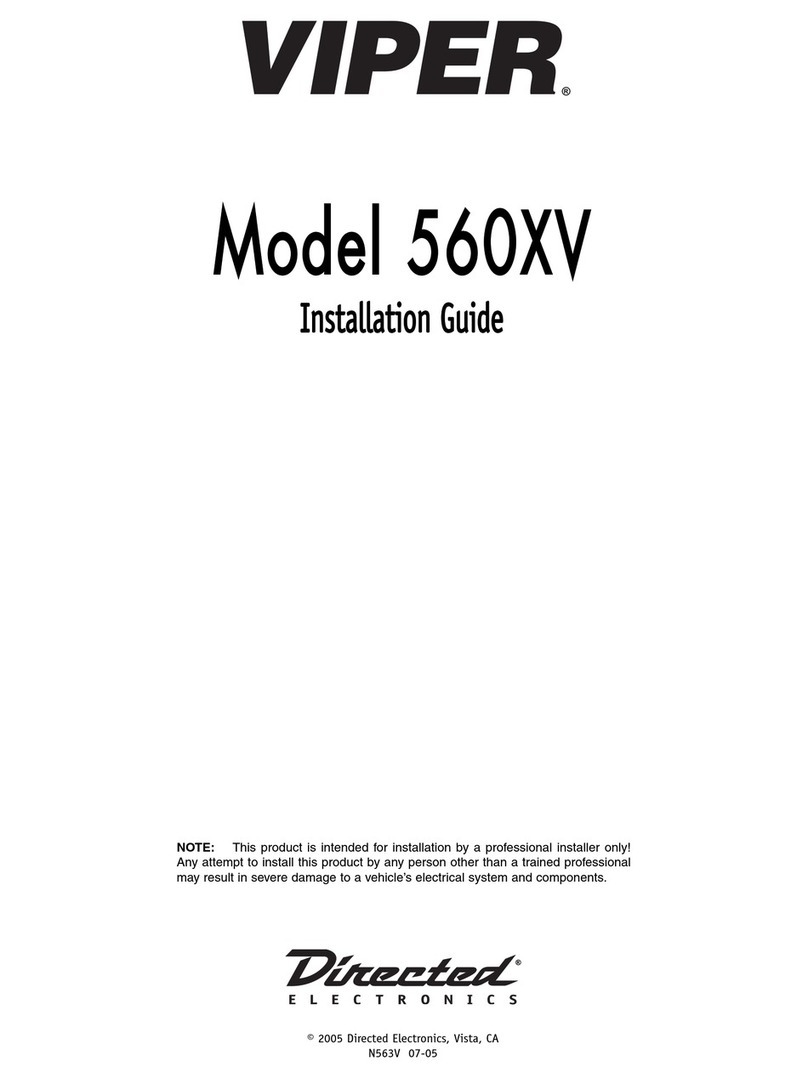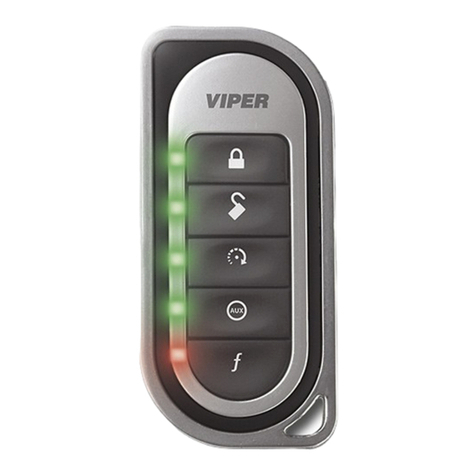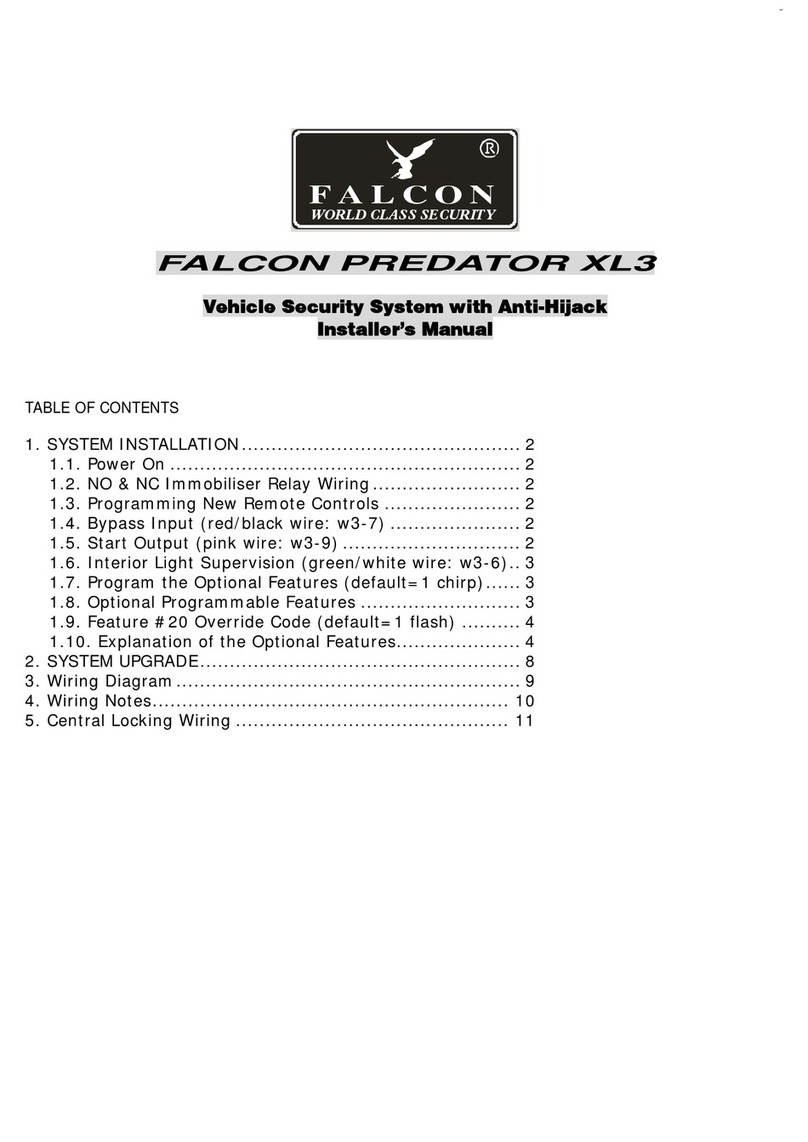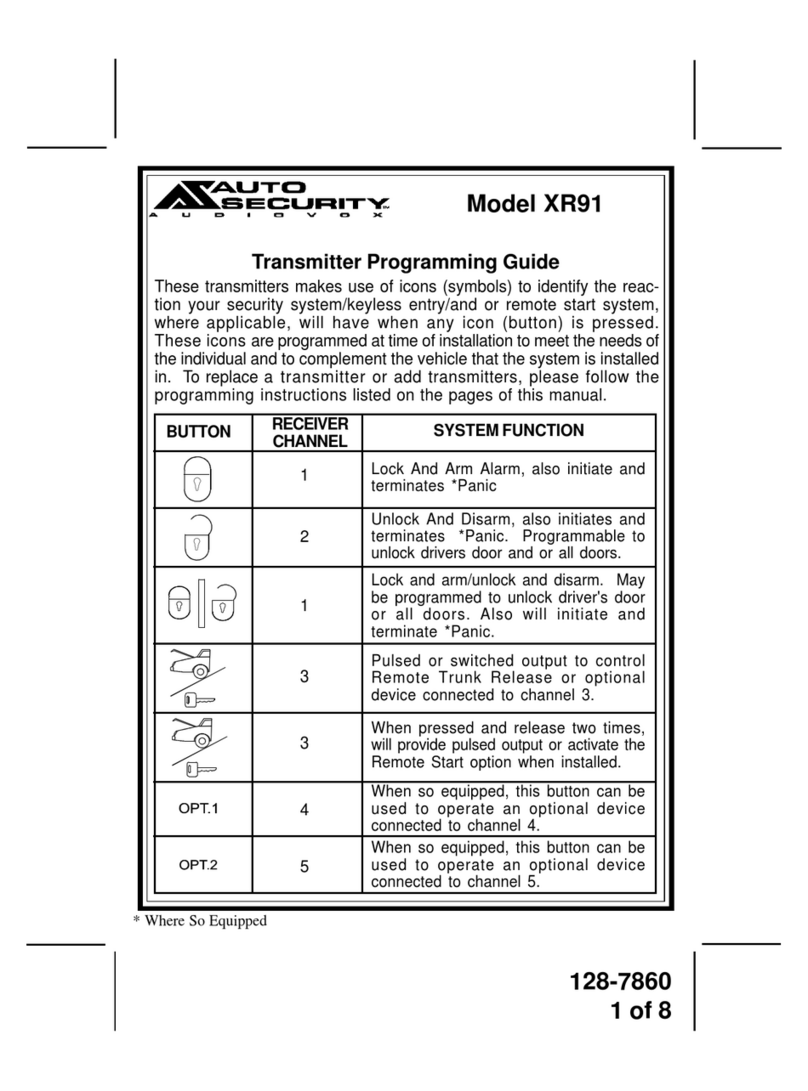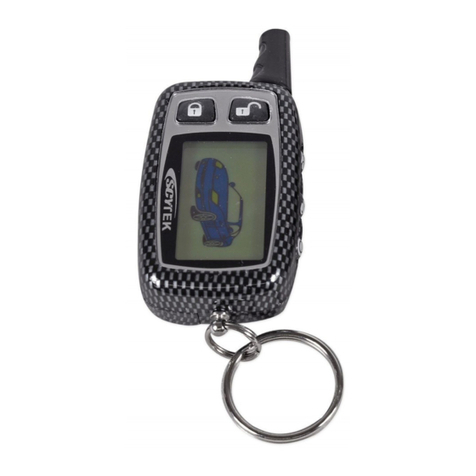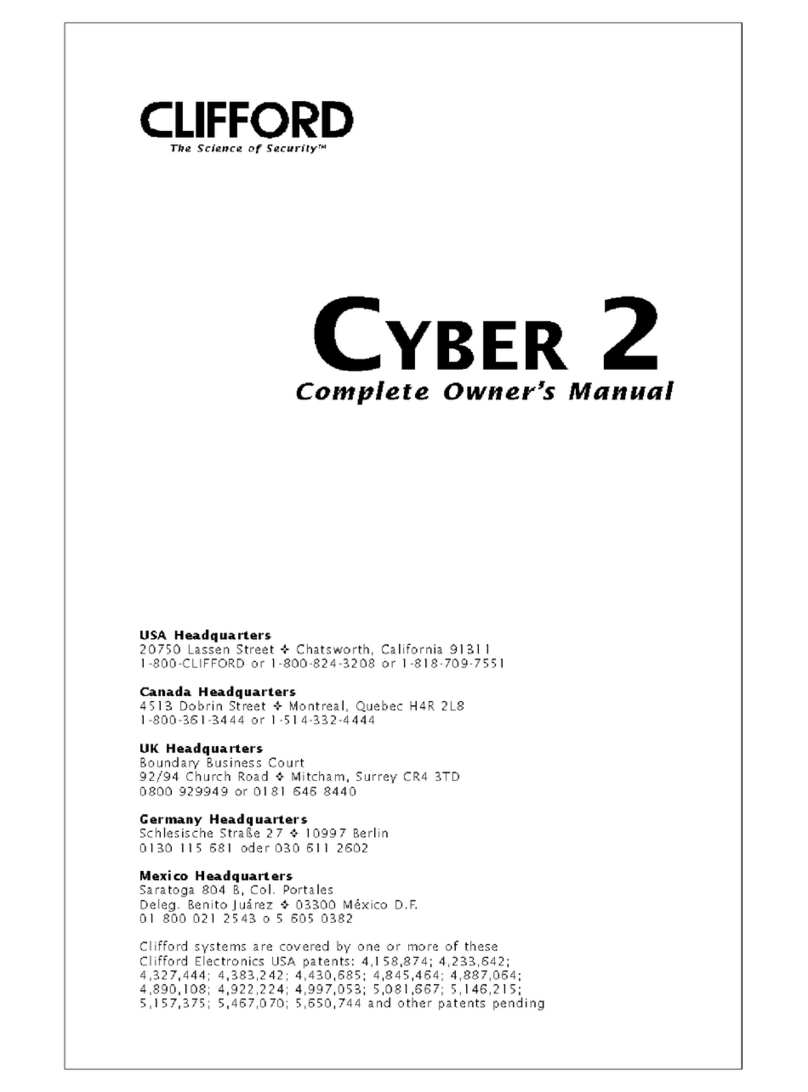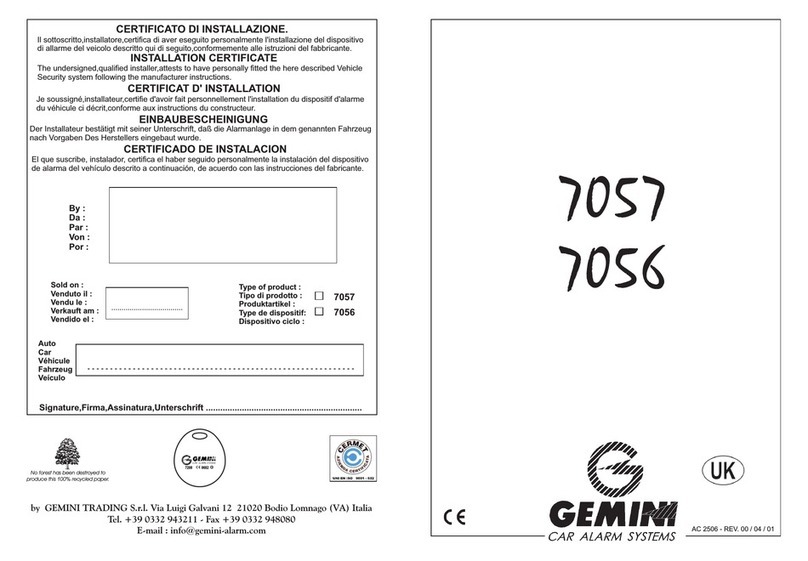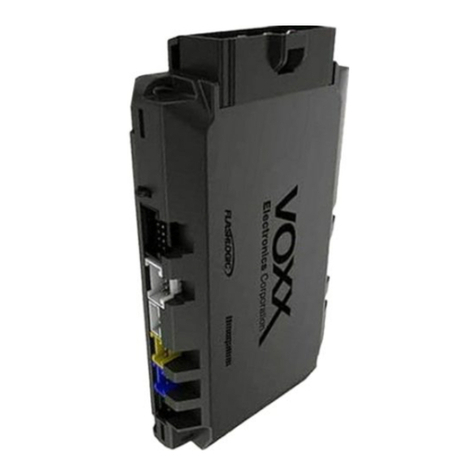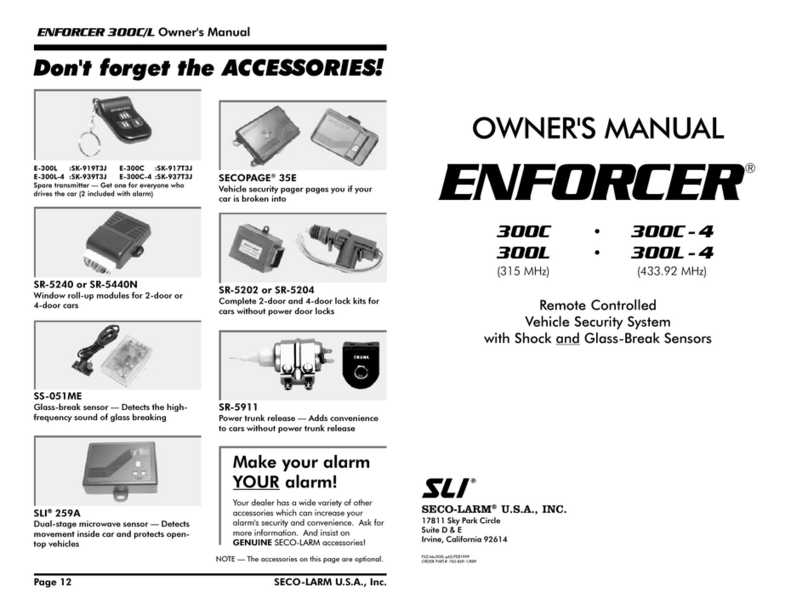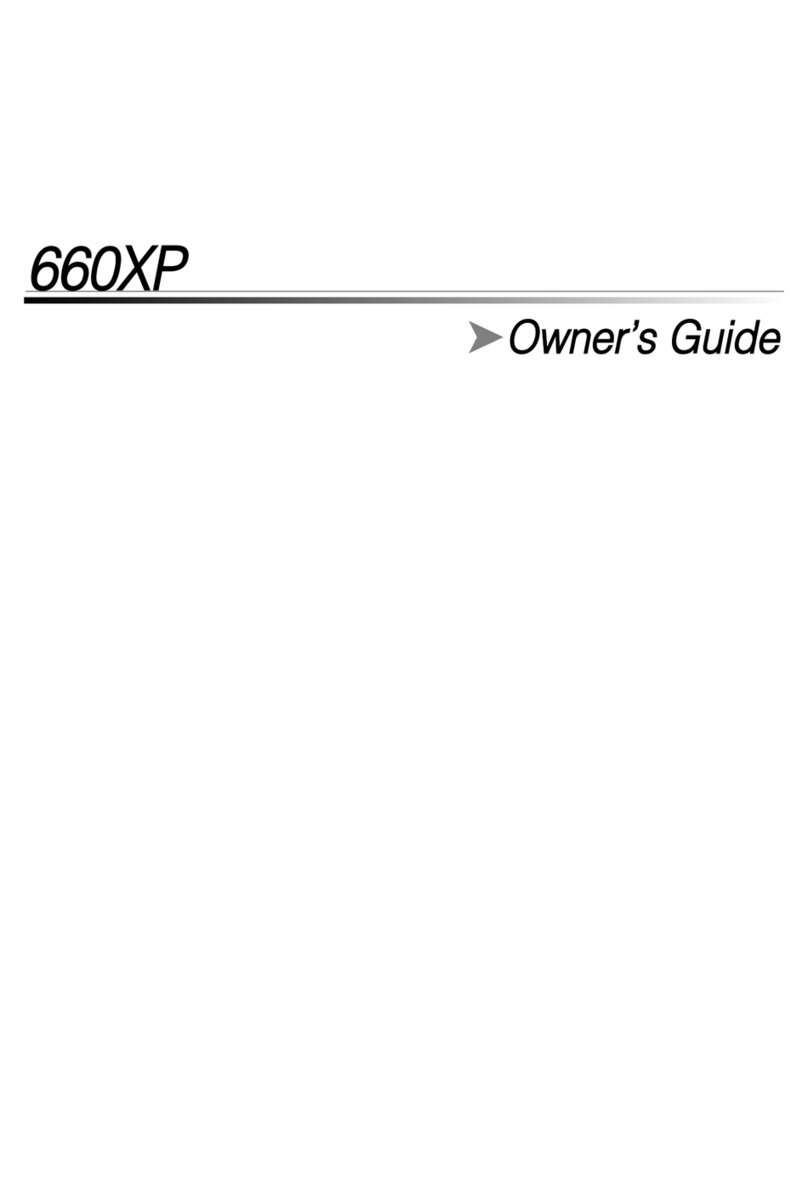© 2005 Directed Electronics—all rights reserved 33
ttaabblleeooffccoonntteennttss
wwhhaattiissiinncclluuddeedd......................................................44
iinnssttaallllaattiioonnppooiinnttssttoorreemmeemmbbeerr................................55
before beginning the installation . . . . . . . . . . . . 5
after the installation . . . . . . . . . . . . . . . . . . . . . 5
ddeecciiddiinnggoonnccoommppoonneennttllooccaattiioonnss..............................6
6
locations for the siren . . . . . . . . . . . . . . . . . . . . 6
locations for the control module . . . . . . . . . . . . . 6
locations for stinger doubleguard shock sensor . . . 7
mounting the antenna . . . . . . . . . . . . . . . . . . . . 7
locations for valet/program switch . . . . . . . . . . . 8
locations for the status LED . . . . . . . . . . . . . . . . 8
locations for the optional starter kill relay . . . . . . 9
locations for the relay satellite . . . . . . . . . . . . . . 9
ffiinnddiinnggtthheewwiirreessyyoouunneeeedd........................................99
obtaining constant 12V . . . . . . . . . . . . . . . . . . 10
finding the 12V switched ignition wire . . . . . . . . 10
finding the starter wire . . . . . . . . . . . . . . . . . . 11
finding the accessory wire . . . . . . . . . . . . . . . . 11
finding the tachometer wire . . . . . . . . . . . . . . . 11
finding the wait-to-start bulb wire for diesels . . 12
finding a (+) parking light wire . . . . . . . . . . . . . 12
finding the door pin switch circuit. . . . . . . . . . . 13
mmaakkiinnggyyoouurrwwiirriinnggccoonnnneeccttiioonnss..............................1144
pprriimmaarryyhhaarrnneessss((HH11)),,1122--ppiinnccoonnnneeccttoorr....................1155
sseeccoonnddaarryyhhaarrnneessss((HH22)),,66--ppiinnccoonnnneeccttoorr..................1155
ddoooorrlloocckkhhaarrnneessss,,33--ppiinnccoonnnneeccttoorr..........................1166
rreemmootteessttaarrttpprriimmaarryyhhaarrnneessss,,77--ppiinnccoonnnneeccttoorr..........1166
hheeaavvyyggaauuggeerreellaayyssaatteelllliitteeccoonnnneeccttoorr......................1177
rreemmootteessttaarrttsseeccoonnddaarryyhhaarrnneessss((HH33)),,55--ppiinnccoonnnneeccttoorr..1177
hhoorrn
n,,cchhaannnneell66((HH44)),,22--ppiinnccoonnnneeccttoorr......................1177
pprriimmaarryyhhaarrnneessss((HH11))wwiirreeccoonnnneeccttiioonngguuiiddee..............1188
sseeccoonnddaarryyhhaarrnneessss((HH22))wwiirreeccoonnnneeccttiioonngguuiiddee..........2222
rreellaayyssaatteelllliitteeiiggnniittiioonns
swwiittcchhiinntteerrffaaccee........................
wwiirreeccoonnnneeccttiioonngguuiiddee......................................
......2244
heavy gauge wires . . . . . . . . . . . . . . . . . . . . . . 24
ribbon harness . . . . . . . . . . . . . . . . . . . . . . . . 25
auxiliary relay output harness . . . . . . . . . . . . . . 25
rreemmootteessttaarrttsseeccoonnddaarryyhhaarrnneessss((HH33))..........................
wwiirreeccoonnnneeccttiioonngguuiiddee............................................2266
hhoorrnn,,cchhaannnneell66hhaarrnneessss((HH44))....................................
wwiirreeccoonnnneeccttiioonngguuiiddee............................................2288
nneeuuttrraallssaaffeettyysswwiittcchhiin
ntteerrffaaccee................................2288
testing the neutral safety switch . . . . . . . . . . . . 29
bbyyppaassssiinnggGGMMvveehhiicclleeaannttii--tthheeffttssyysstteemmss((VVAATTSS))........3311
1
1999955aannddnneewweerrvveehhiicclleeaannttii--tthheeffttssyysstteemmss..................
((iimmmmoobbiilliizzeerrss))......................................................3322
passlock I and passlock II (PL-1 and PL-2) . . . . . 32
passkey III (PK-3), transponder-based systems . . 32
pplluugg--iinnLLEEDDaannddvvaalleett//pprrooggrraammsswwiittcchh......................3333
pprrooggrra
ammmmeerriinntteerrffaaccee,,33--ppiinnbbllaacckkpplluugg....................3333
sshhoocckksseennssoorrhhaarrnneessss,,44--ppiinnccoonnnneeccttoorr........
..............3344
ttaacchhlleeaarrnniinngg........................................................3355
pprrooggrraammmmiinnggjjuummppeerrss............................................3355
ttrraannssmmiitttteerr//rreecceeiivveerrlleeaarrnnrroouuttiinnee™™..........
................3366
tach threshold on/off . . . . . . . . . . . . . . . . . . . 36
light flash (+)/(-) . . . . . . . . . . . . . . . . . . . . . . 36
ttrraannssmmiitttteerrccoonnffiigguurraattiioonnss......................................3388
standard configuration . . . . . . . . . . . . . . . . . . . 38
ssyysstteemmffeeaat
tuurreesslleeaarrnnrroouuttiinnee..................................3399
ffeeaattuurreemmeennuuss................................
........................4422
menu #1 - basic features . . . . . . . . . . . . . . . . . 42
menu #2 - advanced features . . . . . . . . . . . . . . 43
menu #3 - remote start options. . . . . . . . . . . . . 44
ffeeaattuurreeddeessccrriippttiioonnss................................................4455
menu #1 - basic features . . . . . . . . . . . . . . . . . 45
menu #2 - advanced features . . . . . . . . . . . . . . 46
menu #3 - remote start options. . . . . . . . . . . . . 49
vvaalleettmmooddee............................................................5511
ttiimmeerrmmooddee............................................................5511
ttaabblleeooffzzoonneess........................................................5522
sshhuuttddoowwnnddiiaaggnnoossttiiccss............................................5522
to perform shutdown diagnostics . . . . . . . . . . . . 52
lloonnggtteerrmmeevveenntthhiissttoorryy..........................................5533
ssaaffeettyycchheecckk..........................................................5544
ttrroouubblleesshhoooottiinngg....................................................5555
alarm troubleshooting . . . . . . . . . . . . . . . . . . . 55
remote start troubleshooting. . . . . . . . . . . . . . . 55
wwiirriinnggqquuiicckkrreeffeerreenncceegguuiiddee....................................5577
rreellaayyssaatteelllliitteewwiirriinnggqquuiicckkrreef
feerreenncceegguuiiddee................5588


